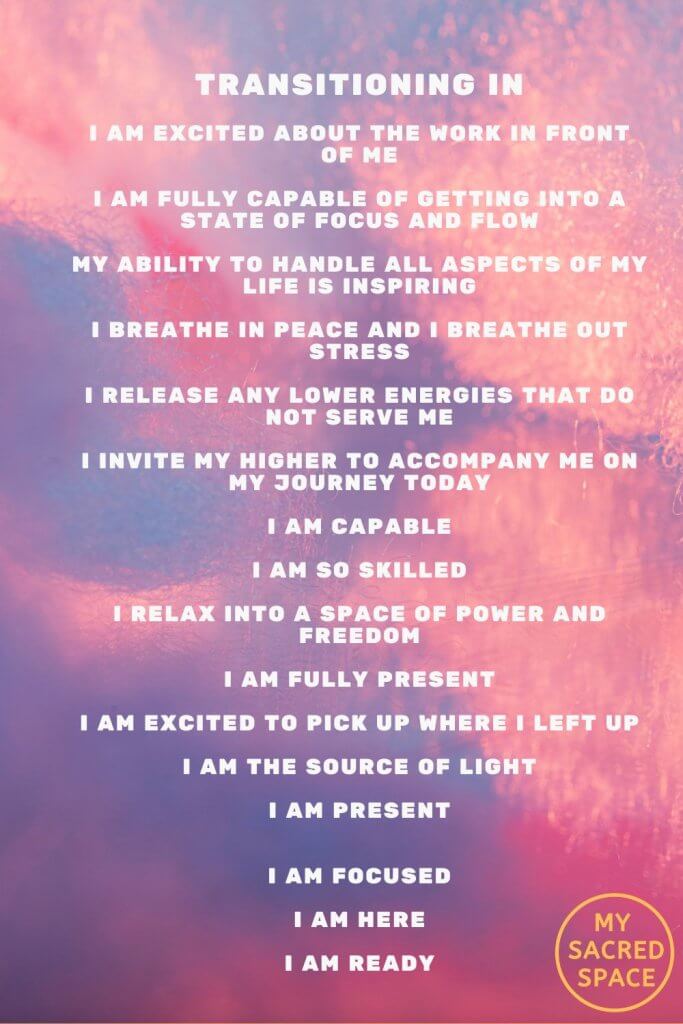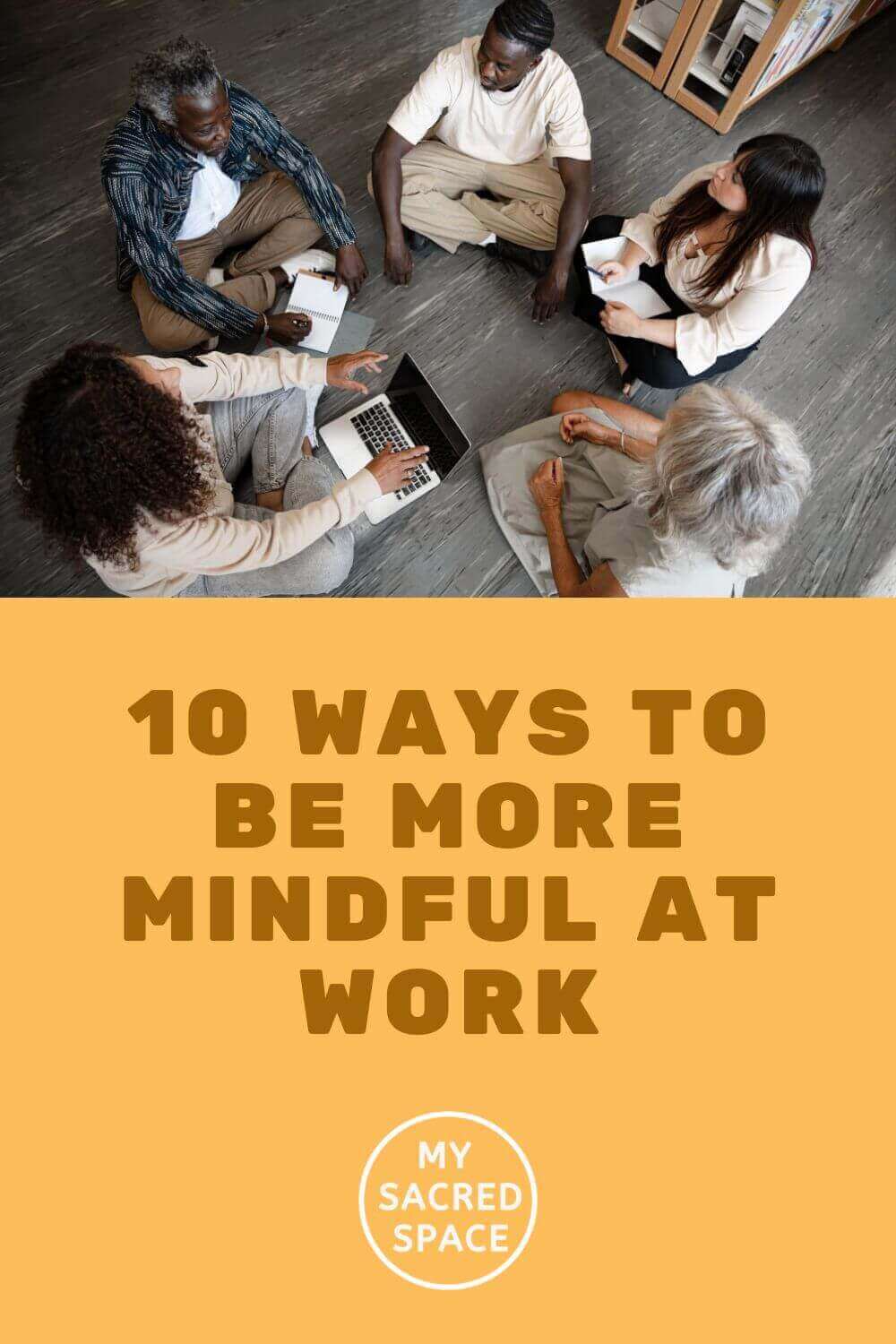Self-integration, accountability to myself, creating every day, showing for myself, deep listening in the journey, creative expression… All these words and their meanings to me are so important, which I am thinking, practicing, and continuing to get excited about for almost all my life.
I am a doer and realizer, which is great as I can give life to many ideas that I have in my mind. On the other hand, I need to hold space for myself for the sustainability of a peaceful work/creation life, otherwise, I can lose the balance of being and doing very easily.
I had circumstances experimenting with the combination of these two facts of mine in different working realities. So far in my life, I have worked in private companies, in NGOs, in my own companies, as a freelancer, as an entrepreneur, in big companies, and in small ones. Each reality brought new challenges to find my anchor during the day.
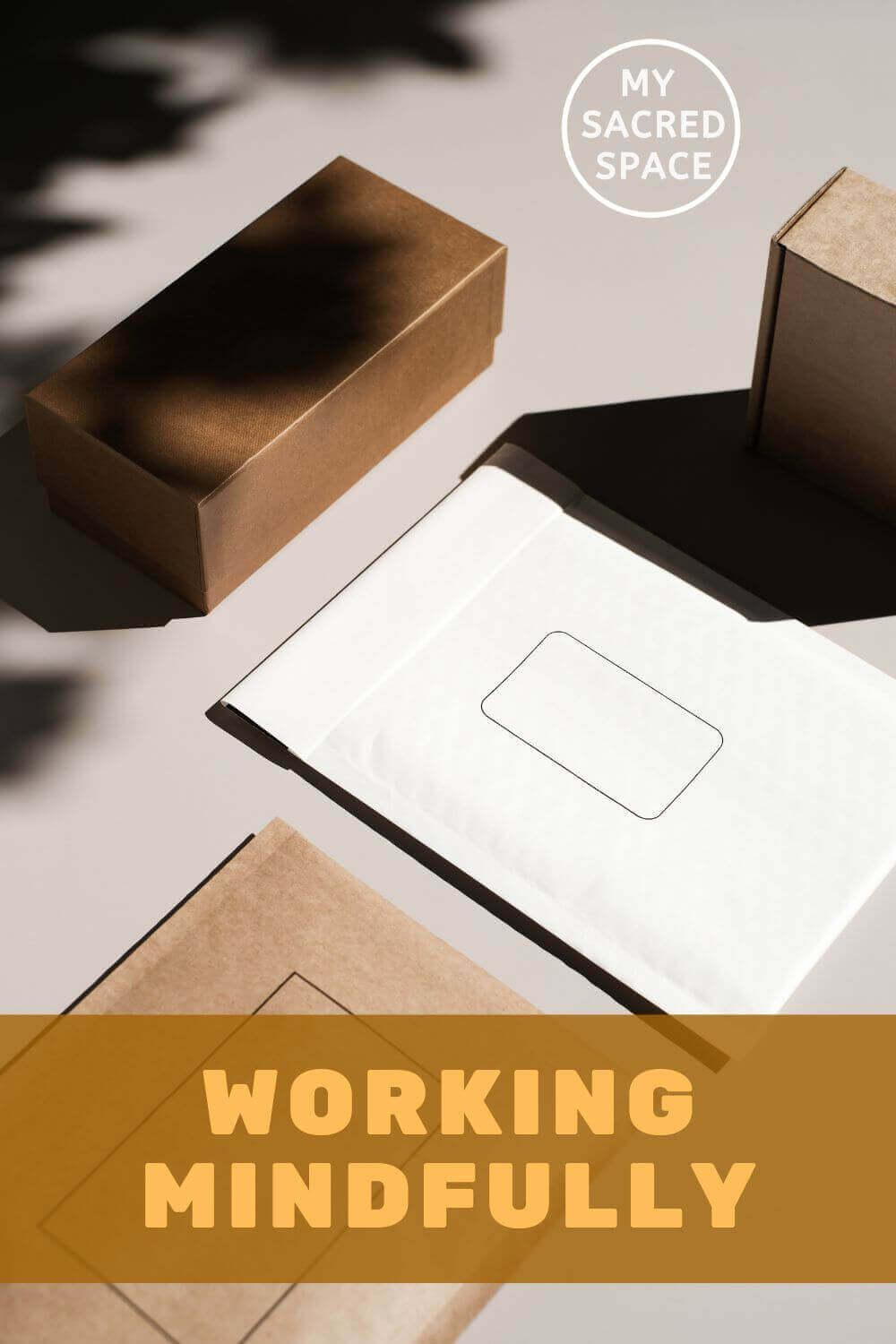
Why is mindfulness important in the workplace?
For more than a year now, I have been working as a full-time contractor in a company, 100% remote from home- which is a new reality that I have been experimenting with so far to find my rituals to find my peace and productivity when working from home for other entity, other than my own company.
Last months with deadlines in the team, and being an action taker, still with that human pleaser side inside me, I was finding myself in challenging situations to find my presence and mindfulness after long hours of screen hours.
This means that after being long hours in front of the computer, I was almost feeling depressed, really hard to come back to the present moment and be mindful. It was almost like I was away, living in another reality than my real life.
All those beauties of normal, simple life, were gone before I could notice them. I could not find the enthusiasm even to do the things that were giving me joy. I was losing connections with my kids and my partner. That is why I see very clearly, again, why mindfulness is so important in the workspace.
That is why I decided to try the premium version of Insight Timer, after using the minuter feature of Insight Timer since 2010. It has been such a positive experience so far.
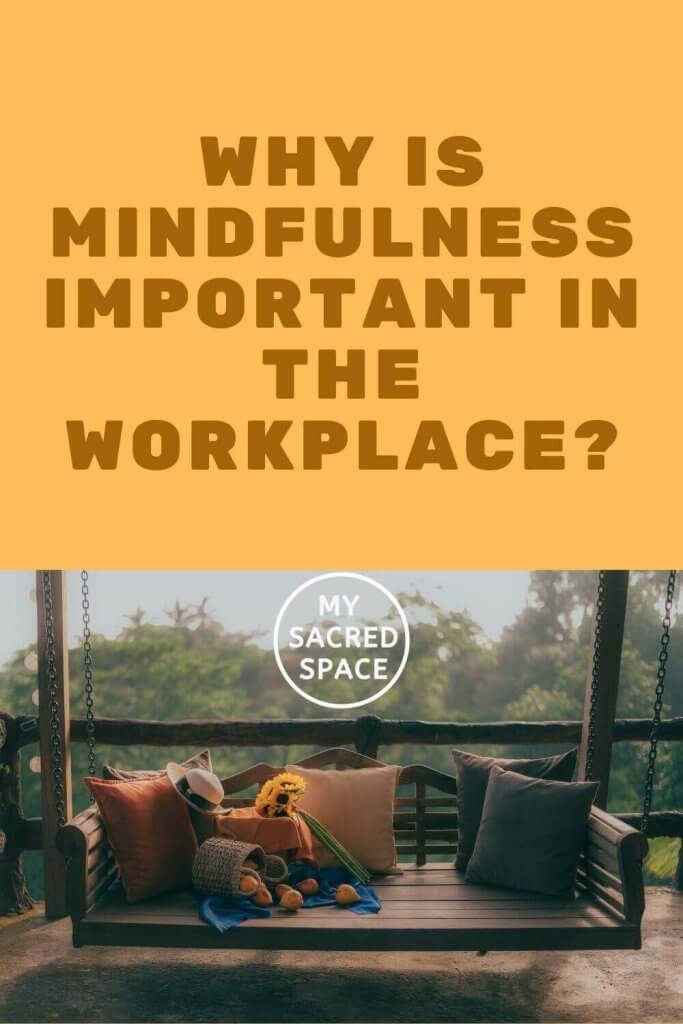
Mindfulness working from home
In the Insight Timer, Plus tab, there are curated contents. There I found some recommendations for people who are searching for peace, calmness, and mind fullness working from home, all linked with different meditations, music, courses, etc. The recommendations were as such:
- Utilize the 60-minute focus rule: set a timer for focused work then take a break to stretch, walk, or engage in a short mindfulness session.
- Embrace chronotype wisdom: Morning meditations or rituals.
- Take mindful moments
- Structured breaks: integrated planned breaks into your day and put them into your calendar like any other meeting.
- Prioritize tasks
- Set clear end times
- Set boundaries with tech
- Reflect & adapt regularly: evaluate your routine. If certain strategies don´t work, adapt and experiment until you find what best suits your needs.
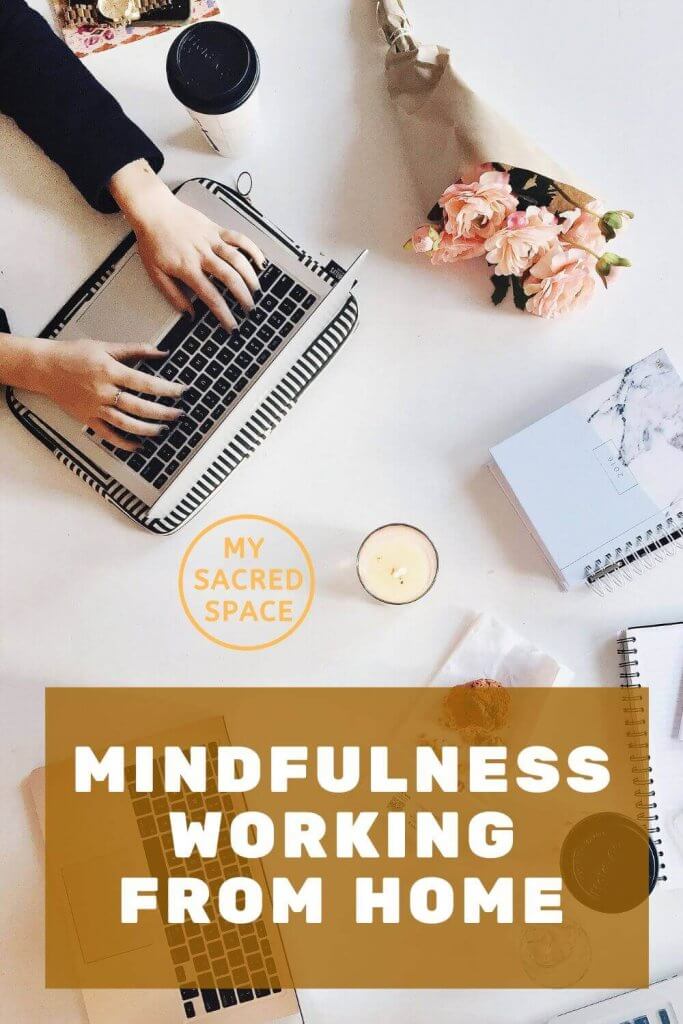
How to promote mindfulness in the workplace?
Inside all these recommendations I saw a 10-day course by Cheryl B. Engelhardt, called Tools For Peace & Productivity When Working From Home. I just finished the course and I wanted to share the notes I took each day.
The course is full of many tools which I have been practicing for the last few days, and digesting them to integrate those that are working for me into my rituals.
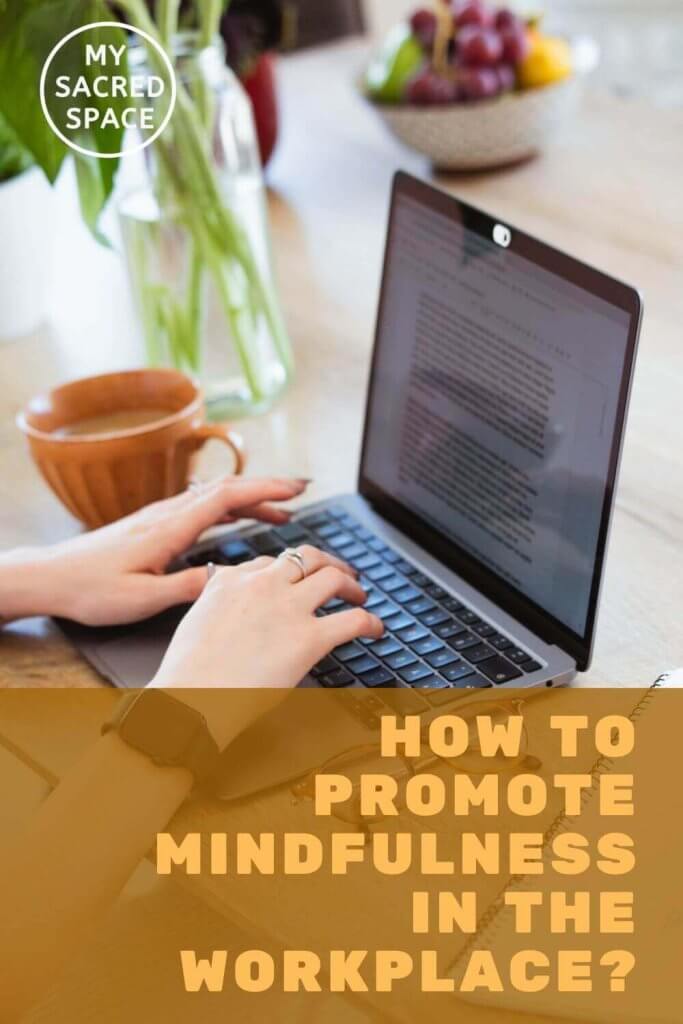
How to implement mindfulness in the workplace?
Rituals can work perfectly to implement mindfulness in the workspace. Those tools that you feel called to, doing them repeatedly with the feeling of connection. Until you find your combination of rituals.
Tools for peace & productivity when working from home
The content of the 10-day course was as below:
1. Visioning Our Workflow: simply freewriting by listing how you want to see your workflow.
2. Space Creation: clearing your space. Figuratively, literally, and digitally. Re-clear your space for every 10 days.
3. Defining Results:
- Write down the goals that light you up for next month, 3 months, or 6 months.
- Manifest something specific.
- Own this goal.
- Thoughts create this reality. Be specific, talk about it, assist and contribute
- Then clarify one main goal. Share your goal. Weekly progress updates. Speak out loud your declared wins.
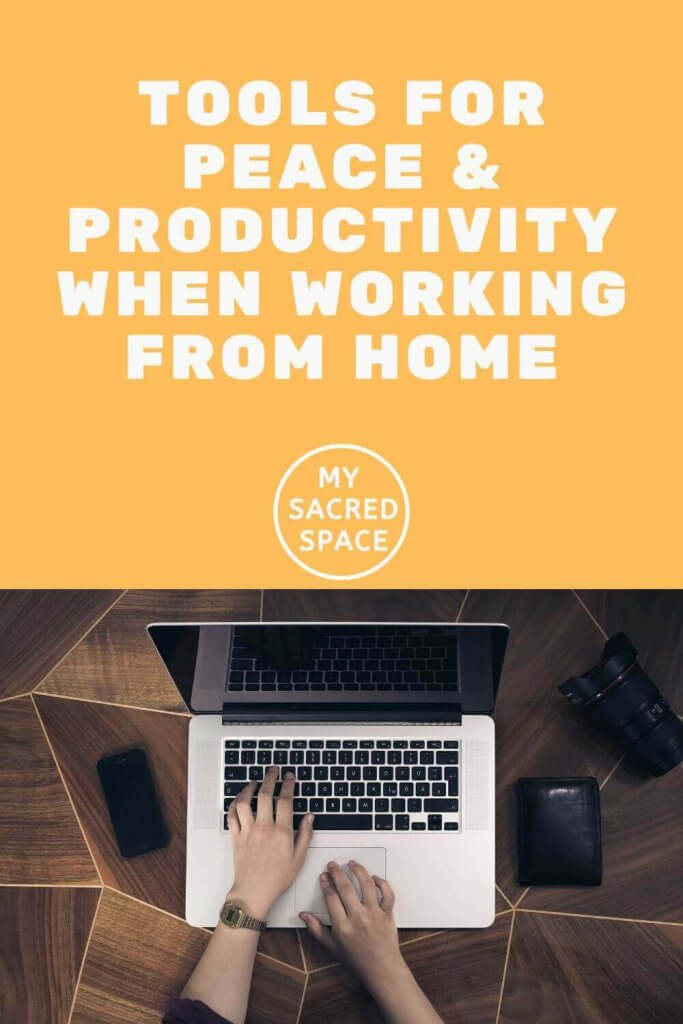
4. Scheduling:
- Using a calendar for its full potential
- Operate one with a calendar
- Master your schedule
- A sense of integrity with your calendar means doing what you said you would do, by the time you said you would do it, and being in communication, the moment you know you can’t make it or need to move it to another time. Showing up what you are committed to.
- Rule of 3: checking with your calendar, if you move an event more than 3 times, you examine whether; that event is not important so you can delete it or it needs to be broken down into smaller events.
- When something new comes, you need to move what you are working on, then you have to choose. Can I communicate this new opportunity or finish what I am working with first? Be crystal clear in your prioritization.
- Integrity is not about being right or wrong. It is about what works. Act with your words, with the principle agreements.
- Calendar is not just for hassle. It is a tool for rest, growth, and peace of mind. The calendar is also a tool for your events, lunch, meditation, and breaks. Doing it especially when you are busy.
- Different scheduling tips:
- Block scheduling: scheduling for chorus for example for 30-40 minutes for many tasks.
- Batch scheduling: Thinking with the example on podcasts; 1 week for interviews, 1 week for editing, etc.
- Use colors and other calendar features:
- Personal calendar- social events, growth workshops, workouts, family engage
- Different work calendars
- To-do calendars: many tasks, as thinking of them
- Hiding calendars to see one.
- Monday mornings can be great for scheduling your work. Reflect on the win and check if you are focused and achieving. Then apply that focus to what you scheduled for the upcoming week.
- On Monday mornings you can declare 3 things you want to accomplish by next week. Only 3 things. When new things come up, put them on next week’s agenda. Then choose one thing and move forward.
- Backward planning: break down into activities and trust your future self to show up
I also watched this video from Ali Abdaal, How I Manage My Time – The Trident Calendar System at the exact time, which fits perfectly with the intention of a mindful and productive workspace.
5. Setting & Keeping Boundaries
There were great takeaways, which I already have integrated into my life, so I did not take notes. However, I took note of this to integrate this one: A clear notifier in my door so as not to be disturbed.
Boundaries and communication of boundaries are important for me, as I take the power of my creation from concentration and I am realizing that those moments when my kids enter to room, without thinking twice, are cutting those moments of productivity and flow, and create a lot of disturbance and upset inside.
6. Transitioning In and Out of Flow: when we are concentrated and working, even though we set and keep boundaries, things can happen and we could need to transition. Some affirmations for transitioning in and out of flow can be a good idea.
When distracted. Transitioning out of the flow
- I am doing a really good job
- My life is my own and I love the surprises that come with it
- I can easily transition in and out of my flow state
- I can pick up where I left off with grace
- I trust myself to be able to handle anything that comes my way
- I am free to step away
- I am wanted
- I am a contribution
- I honor myself and my needs
- I am a powerful productive being
- I exude grace and mastery
Transitioning in
- I am present
- I am excited about the work in front of me
- I am fully capable of getting into a state of focus and flow
- My ability to handle all aspects of my life is inspiring
- I breathe in peace and I breathe out stress
- I release any lower energies that do not serve me
- I invite my higher to accompany me on my journey today
- I am capable
- I am so skilled
- I relax into a space of power and freedom
- I am fully present
- I am excited to pick up where I left up
- I am the source of light
- I am present
- I am focused
- I am here
- I am ready
7. Dealing With Other People
Working mindfully with anger: Upset is an unmet expectation and a complaint is an unacknowledged effort. Those moments when there are triggers in the working space or to prevent those moments, there are some recommendations.
Time for restoring integrity (to restore balance/positive energy)
- state original agreement
- state you broke the agreement
- explain the impact has on them & you
- declare what they can count on you for in the future
Time for acknowledging (others, or yourself): state the thing the person did (x), and say what effect that thing had on you (Y). When you did X, I was inspired to do Y.
Time to ask for acknowledgment: clear/straightforward, without any complaint.
So here comes the question when to acknowledge and ask for acknowledgement?
If it made a difference acknowledge. If you put in a lot of work, ask for acknowledgment.
Remember, you can give acknowledgment to yourself. When you see yourself, you will remove the need to be seen.
8. Tips and Tricks of the Peaceful and powerful
Having an accountability body is a great idea. We are planning to try this with my husband.
It is about the condition of being responsible.
Between 1-5 other people as an accountability body can be a good idea.
Meet weekly, bi-weekly, monthly.
Questions you can ask your accountability body
- What did you say, you would complete by today?
- Did you do it? If so acknowledge
- If not, what was stopping you?
- How can I support you in completing the tasks in the next week?
- What would you like to complete by our next call, that would make a huge difference for your career?
- Can I support you in ensuring this gets done, no matter what?
- What is the one task, you are just dreading to do?
- Can you do that one thing today?
- Is there anything else going on to share or get out of your chest so it does not stay in the way of the awesome work you are about to do?
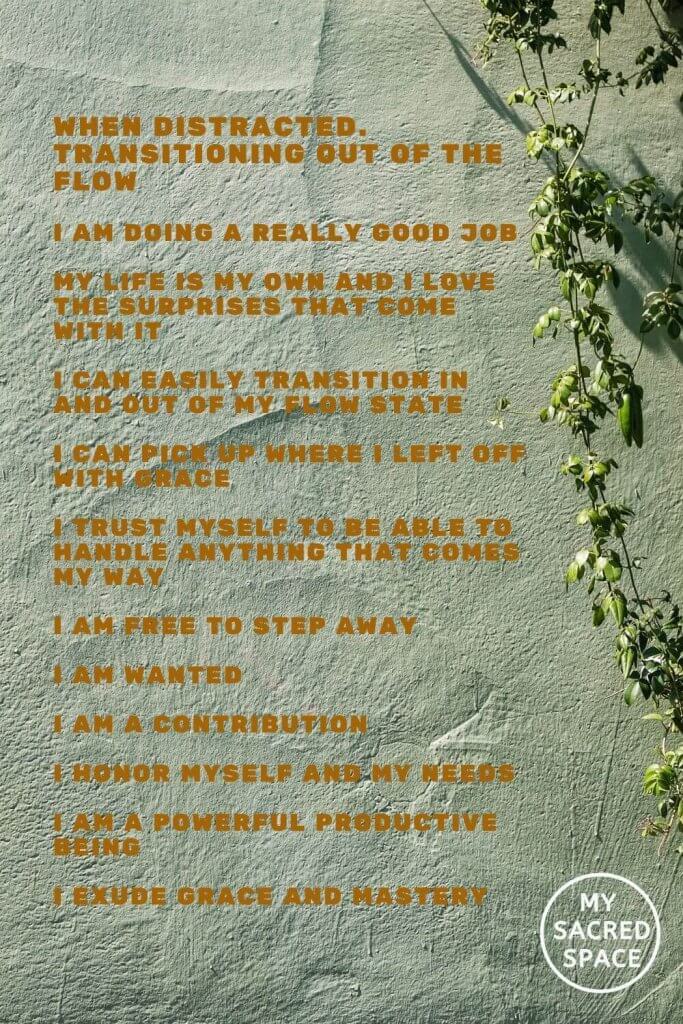
9. Grounding work and meditation
Additional to midday breaks, lunches, and walking grounding meditations can help to transition into work. You can try this grounding meditation.
These days I am doing a Global Round Table Leadership program for 10 weeks (what a coincidence!) and this week´s topic was Gifts of Slowing Down. For that, I am adding meditation to my daily schedule, as well as reflection at night and reflection at the end of the week. These are the recommended prompts for each.
Pause throughout the day
At the beginning of each weekday, confirm you have set up two or three “pauses” in the day for yourself.
Pauses don’t need to be lengthy. They can take as little as ten minutes. The important thing is that you take some time to set aside all activities and simply sit with yourself. This is a kind of personal check-in.
During these pauses, pay careful attention to:
- The thoughts going through your mind
- The emotions you are experiencing
- What your body feels like
- Your overall energy level
Jot down a few notes about anything you notice. Over time, this will help you identify patterns, and it will heighten your ability to pay attention to what you are experiencing at work, even in the heat of the moment.
Night reflection
At the end of each day, take time to journal. Please remember to schedule 15 minutes toward the end of each day for this powerful practice.
Building off of the practice of “Leading as Learners,” this reflection will focus on deepening your learning orientation. We ask that you to think back over the day you have had — the meetings, the projects, the interactions — and to reflect on the following questions:
- When were you most open to learning? Think about times during the day when you felt curious or when you could feel yourself being challenged and stretched in a positive way.
- Who or what were you learning from?
- When did you struggle to maintain a learning orientation? Think about the times during the day when you were closed off to new ideas and experiences. These might be times when you were simply focused on trying to get things done and to communicate what you already knew. They might be times when you were acting as a positional leader and telling others what to do.
Weekly reflection
At the end of the week, look back over your reflections. Give yourself the gift of a spacious 1/2 hour or hour. You could start with some deep slow breaths or with Lori’s breathing exercise and then consider and journal about these questions:
- How did the overall practice of slowing down feel? Did it shift your experience of work in any way? In the words of Angeles Arrien, what inspired, surprised, or challenged you about this practice?
- What patterns did you notice about your ability to Lead as a Learner? When was your learning orientation highest? When were you the most open? Conversely, what kinds of things tended to prevent you from being in a learning mode?
- What slowing-down practices would you like to build into your daily or weekly rhythm in the future?
10. Completing the day
Declaring the end of the day is necessary in my case, especially after long screen hours I find it hard to find the joy and enthusiasm to be integrated with the simple beauties of life. Rituals can be helpful here. Defining a completing the day ritual, such as going to see the sea, even for 10 minutes?
In the course there was a beautiful end-of-day meditation with powerful affirmations (on day 10 of the content), I am adding these end-of-day meditations to my calendar, to prioritize self-care after work intentionally.
Conclusion
Mindfulness is a journey. The more you live mindfulness moments, the more you become aware of those seasons of yours when you can not be present and mindful, so that you miss the simplest beauties that life is gifting you all the time.
As life is a spiral, we will continue walking, falling, standing up, and continuing the search for returning home. These tools can serve for that.
Below is a Pinterest friendly photo…. so, you can pin it to your Mindfulness Board!
